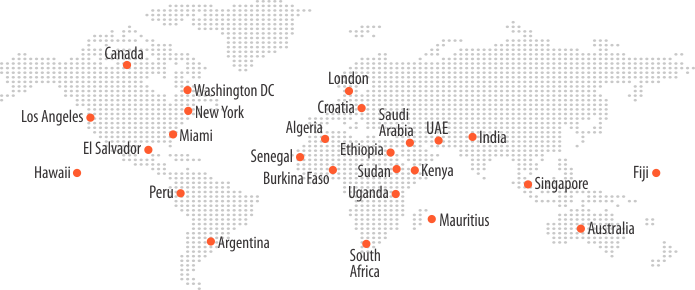8 Critical Factors to Consider While Adopting SMS Hubbing

Businesses exchange 23 billion messages every day via SMS at an astounding 98% open rate, which keeps SMS communication as the most dependable messaging infrastructure. Network protocol diversity, fragmented telecom networks, and excessive costs associated with MNOs operating directly between one another are obstacles to the worldwide efficiency of messaging.
International SMS hubbing effectively links messages and makes it easier to integrate telecom networks. Businesses can improve the performance of their international messaging services and increase dependability while lowering costs by using SMS hubbing infrastructure and gateways.
This blog starts with a recap of SMS hubbing fundamentals and dives deeper into structured detailing of the five key factors that decision-makers need to consider while choosing SMS hubbing: (i) cost efficiency, (ii) regulatory compliance and security, (iii) scalability and future-readiness, (iv) vendor reliability and network coverage, and (v) interoperability and delivery performance.
Key Components of SMS Hubbing
SMS hubbing reduces complexity by centralizing message routing and ensures reliable message delivery. A number of crucial components, including MNOs, aggregators, SMS gateways, and interconnection agreements, enable it to operate.
SMS Gateway
An SMS gateway makes it easier to send and receive messages domestically and internationally by connecting computer networks and telecommunication networks. Text messaging gateways ensure network interoperability by standardizing message formats. Businesses use SMS gateways for mass communication, marketing campaigns, customer notifications, and real-time alerts. Advanced gateways include delivery report tracking, scheduling, and two-way messaging.
Mobile Network Operators (MNOs)
Traditionally, MNOs had to establish direct agreements with multiple operators for SMS exchanges, leading to high costs and operational complexities. SMS hubbing eliminates these inefficiencies by serving as a central point of communication, allowing MNOs to expand their global reach while focusing on their core operations. This approach significantly reduces costs and enhances operational efficiency.
Aggregators
Aggregators connect companies, MNOs, and SMS hubs and guaranteeing effective SMS message delivery. By providing a single point of integration, aggregators simplify large-scale messaging operations for businesses while maintaining high performance standards. These specialized intermediaries leverage advanced routing technologies to optimize message distribution across multiple networks, maximizing deliverability and reach. Businesses use aggregators to transmit marketing campaigns, authentication codes (OTP), transactional alerts, and customer service messages. Aggregators offer valuable real-time tracking and analytics through SMS gateways, giving businesses actionable insights into their messaging performance.
Interconnection Agreements
Interconnection agreements establish the critical technical and financial terms governing SMS traffic exchange between mobile network operators (MNOs) and SMS hubs. These agreements specify pricing structures, security requirements, and message routing procedures to guarantee smooth message delivery. Interoperability is improved by open interconnection agreements among MNOs, SMS hubs, and aggregators; this lowers fraud, minimizes service interruptions, and avoids delivery delays. Well-structured interconnection agreements create a foundation for reliable global messaging, benefiting both providers and businesses through improved deliverability and cost predictability.
Benefits of SMS Hubbing
SMS hubbing, which brought an effective large-scale solution for managing worldwide SMS communications, revolutionized the global messaging sector. The service lowers costs, facilitates global corporate expansion, and increases operational performance. SMS hubbing offers a number of significant benefits, such as:
Worldwide Connectivity
Various network protocols make it difficult to achieve continuous international SMS conversation. Due to their limited direct links with other mobile network operators, members of the mobile network operator community confront difficulties with global connectivity. Since a centralized hub relationship allows operators to interact with several suitable operators, SMS hubbing is advantageous to operators. SMS hubbing makes reliable international message transmission via several international telecom networks possible. For companies looking to provide aggressive worldwide communication services, SMS hubbing creates efficient carrier collaboration and facilitates the integration of interconnected network infrastructure.
Cost Efficiency
SMS hubbing lowers costs associated with message channel management, direct interworking agreements, and network maintenance, and helps save money. MNOs can save operating costs and achieve optimal SMS transmission performance with single hub access. Businesses who send bulk messages might benefit from lower SMS delivery costs because of the automatic message routing capability of the hubs. By using SMS hubbing, businesses can lower the costs associated with bilateral agreements and relying less on multiple intermediaries for better cost control. Automated similar procedures save wasteful expenses to maximize the flow of messages through the system.
Enhanced Interoperability
Using pre-established protocols, SMS hubbing provides continuous network connection with 2G, 3G, 4G, and 5G connectivity. Through standardized protocols and intelligent message conversion, these hubs automatically adapt content to each recipient’s network specifications. This eliminates network incompatibility and ensures uninterrupted message delivery. The result is total reliability: whether sending simple text alerts or rich media content, businesses benefit from consistent, high-performance deliverability across every destination network.
Key Considerations for Decision-Makers in Telecom
Before putting SMS hubbing solutions into place, telecom decision-makers must evaluate these crucial factors:
1. Scalability and Future-Readiness
Scalability must be at the top of the list of crucial factors when adding new clients to SMS service operations. Hubbing solutions that support 5G technology, manage growing SMS volumes, and facilitate communication integration with contemporary technical advancements like Rich Communication Services (RCS) and IoT messaging should be shortlisted by decision-makers.
2. Regulatory Compliance and Security
Telecom providers must adhere to local and international compliance standards, including GDPR, HIPAA, and other regulations that are specific to the telecom industry. SMS hubbing providers, who set and enforce encryption standards along with fraud prevention and data protection procedures, are crucial to the safe operation of message exchange.
3. Revenue Optimization and Business Growth
By leveraging efficient routing, premium messaging features, and other services like real-time analytics and AI-driven insights, telecom firms can generate new income streams through the use of SMS hubbing services. Some of the examples would include premium messaging services, data on real-time SMS campaign analytics, and value-added services like bunding SMS with RCS. A well-executed hubbing system will generate extra revenue streams for the company in addition to financial savings.
4. Choosing the Right SMS Hubbing Solution
For commercial enterprises and MNOs looking to improve their messaging operations, choosing the right SMS hubbing solutions becomes crucial. Companies and MNOs use a carefully selected SMS hub to acquire global connection, as well as cost-effective communication options and optimal message delivery. The optimal SMS hub solution is determined by the successful selection of a vendor, platform capabilities, customer satisfaction metrics, and the implementation of fair pricing structures.
5. Vendor Selection
Businesses would do well by choosing an SMS hub supplier renowned for their expertise and longstanding reputation in the industry. Wide-ranging network capabilities, demonstrated skill in SMS hubbing, and significant market exposure are necessary for a trustworthy SMS hub supplier. Ensuring security standards and complying with international data protection regulations are prerequisites for the deployment of secure SMS transmission.
6. Functionality and Usability
A top-notch SMS hub’s functionality should increase operational efficiency as well as user convenience. Companies can monitor their SMS activity, review delivery data, and identify performance issues simultaneously by utilizing real-time analytics platforms. Businesses utilize the crucial performance metrics generated by measurement tools to improve their messaging operations. SMS hubs must be able to expand on a regular basis in order to continue providing smooth service even as SMS volumes rise.
7. References and Reviews
Consider the industry’s reputation and client feedback before selecting their SMS hub supplier. Testimonials and client case studies are used as trusted indicators to assess the reliability and efficacy of SMS hub providers. Professional knowledge and high-quality services can be verified by industry certificates, honors, and recognition.
8. Pricing and Licensing
When evaluating SMS hub providers, decision-makers must prioritize transparent pricing models (volume-based tiers, bulk discounts) while watching for hidden fees like cross-border surcharges or DLR costs. They should also opt for flexible licensing—pay-as-you-go for variable needs or subscriptions for stable volumes—and negotiate auto-scaling terms to ensure rates decrease with higher usage. Factoring in compliance costs (GDPR/CPRA) and ensure penalty protections for delivery failures is another critical consideration. Finally, they should compare factors like Tier-1 vs. Tier-2 route costs, off-peak discounts, and A2P/P2P pricing to align with the budgets and scalability needs.
Conclusion
SMS hubbing transforms global business communication by solving cost inefficiencies, fragmented networks, and unreliable delivery. As highlighted above, its key components (gateways, MNOs, aggregators, and smart routing) create a streamlined, scalable messaging infrastructure.
For decision-makers, prioritizing regulatory compliance, vendor reliability, and future-ready scalability ensures long-term ROI. With transparent pricing and strategic partnerships, businesses can unlock new revenue streams (premium messaging, AI analytics, and others) while optimizing costs.
In an era where 98% of SMS messages are read, adopting robust hubbing solutions is not just an upgrade, it has become a competitive necessity. Bankai Group’s expertise exemplifies how the right infrastructure turns global messaging challenges into seamless, profitable operations. With best-in-class SMS hubbing and gateway services, we ensure excellent SMS routing via proven global delivery networks. Ready to enhance your messaging your capabilities? Contact us today to get started.





